Sign up for workout ideas, training advice, reviews of the latest gear and more.

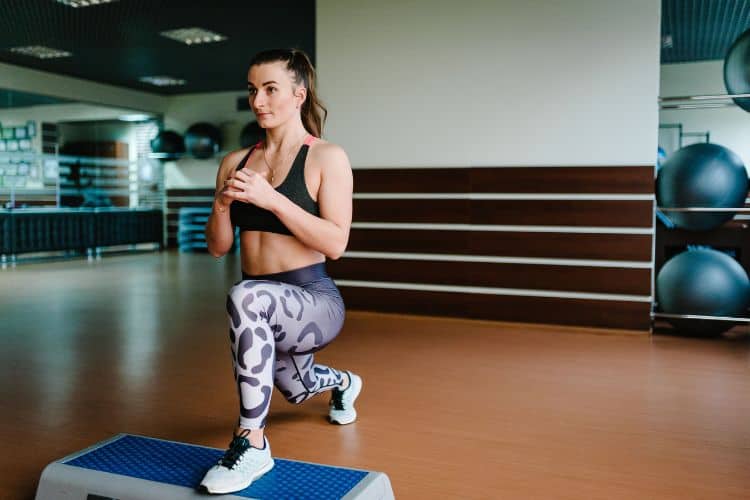
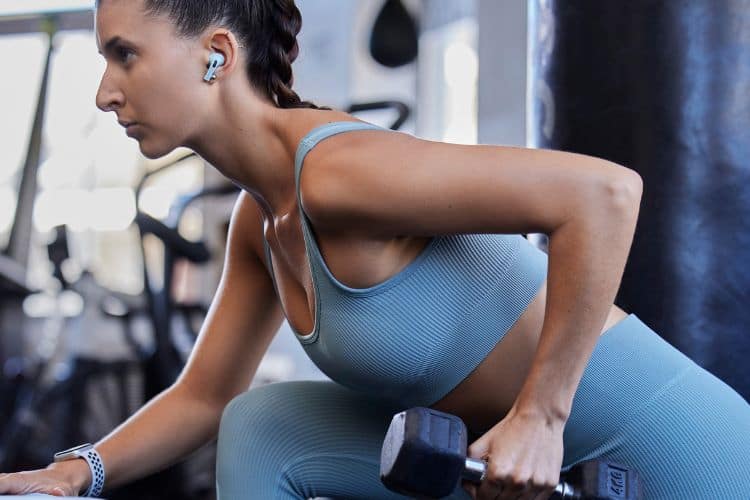
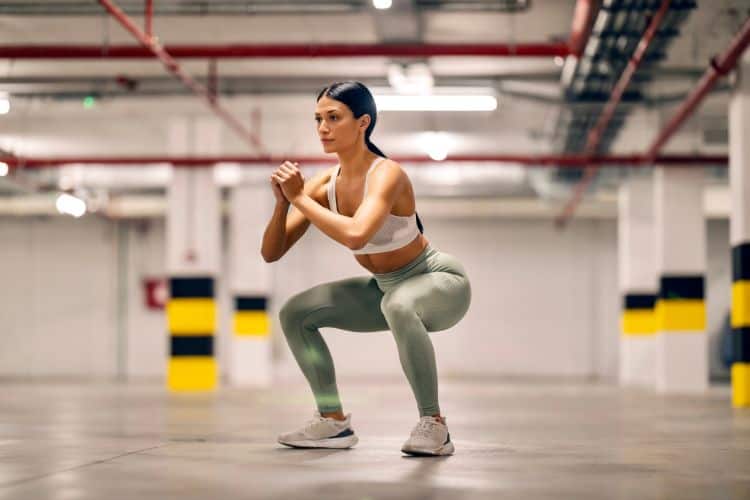
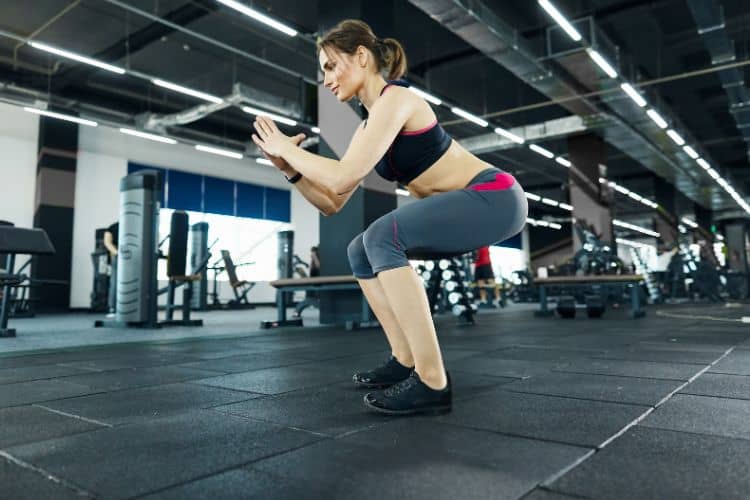
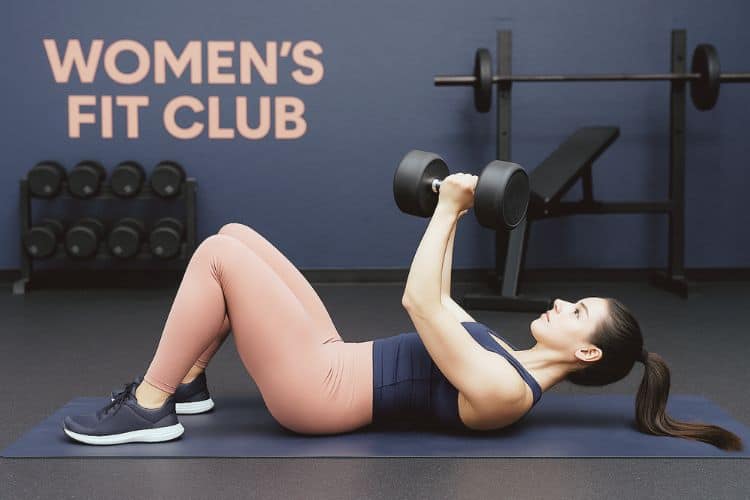
If you’re looking for a fast, effective, and muscle-sculpting workout that torches calories and tones your arms, shoulders, chest, and back — this 20-minute HIIT dumbbell upper-body workout is for you. Designed to fit into even the busiest schedules, it combines the intensity of high-intensity interval training (HIIT) with the muscle-building benefits of resistance training using dumbbells.
This workout targets all major upper-body muscles while elevating your heart rate for maximum fat burn and endurance improvement. All you need is a pair of dumbbells, a timer, and determination.
Traditional strength training focuses on building muscle, while cardio improves heart health and burns calories. HIIT merges both, allowing you to build lean muscle and burn fat simultaneously. The alternating periods of high-intensity effort and short rest periods keep your metabolism elevated — long after the workout ends.
During HIIT, your body experiences EPOC (Excess Post-Exercise Oxygen Consumption) — meaning you continue to burn calories for hours post-workout. This makes short sessions like this 20-minute routine as effective as longer, slower workouts.
Using dumbbells introduces resistance, which strengthens your upper-body muscles — shoulders, arms, chest, and back. Over time, this helps create a toned and athletic upper body, enhancing both aesthetics and performance.
With only 20 minutes, you can still achieve a complete upper-body workout that challenges your cardiovascular system and builds strength — no gym membership required.
This session follows a HIIT structure:
Before diving into the main workout, warm up your muscles and joints to prevent injury and enhance performance. Perform each movement for 30 seconds:
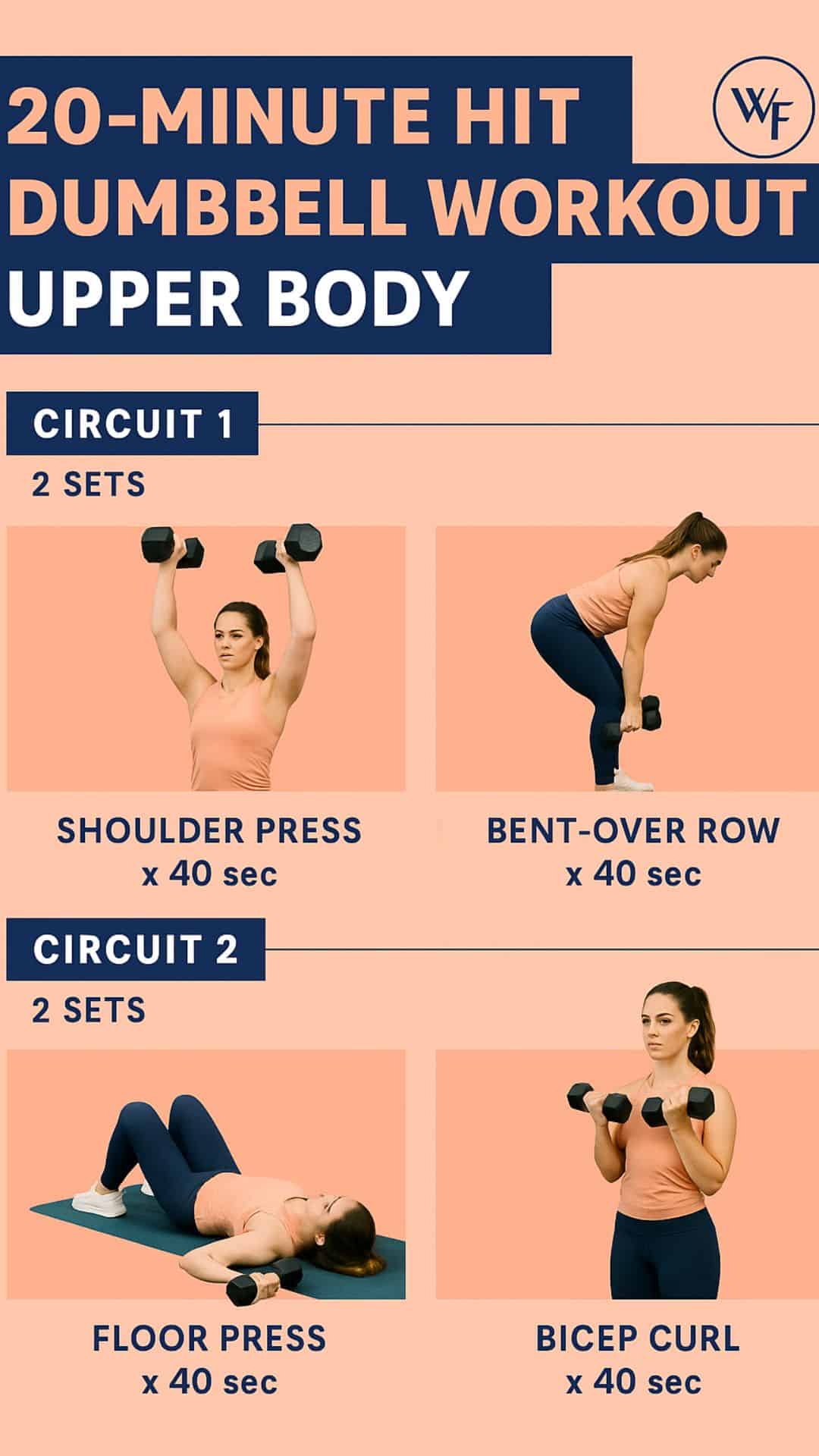
Muscles worked: Shoulders, triceps, core
How to do it:
Hold a dumbbell in each hand at shoulder height. Slightly bend your knees and explosively press the weights overhead while extending your legs. Slowly lower back to start.
Tip: Engage your core to stabilize your body during the press.
Muscles worked: Back, biceps, rear delts
How to do it:
Hinge at your hips with a flat back, dumbbells hanging down. Pull the weights toward your torso, squeezing your shoulder blades together. Lower slowly.
Tip: Keep your core tight to protect your lower back.
Muscles worked: Chest, triceps, shoulders
How to do it:
Lie on your back with knees bent, holding dumbbells above your chest. Lower until your upper arms touch the floor, then press back up.
Tip: Keep your wrists aligned with your elbows for proper form.
Muscles worked: Back, core, arms
How to do it:
Start in a plank position with hands gripping dumbbells. Row one weight up to your side, keeping your hips square. Lower and repeat on the other side.
Tip: Avoid twisting your torso; focus on controlled movement.
Muscles worked: Shoulders
How to do it:
Stand tall with dumbbells by your sides. Lift both arms outward to shoulder height, then lower with control.
Tip: Slightly bend your elbows and move slowly to maintain tension.
Rest 60 seconds before repeating the circuit.
Muscles worked: Biceps, forearms
How to do it:
Hold dumbbells with palms facing each other and curl up to shoulder level. Lower with control.
Tip: Keep elbows close to your body to maximize isolation.
Muscles worked: Shoulders, triceps, chest
How to do it:
Hold dumbbells in front of your chest with palms facing you. Rotate your wrists as you press overhead, then reverse the motion on the way down.
Tip: Focus on smooth transitions to avoid jerky movements.
Muscles worked: Front deltoids
How to do it:
Lift one or both dumbbells to shoulder level, then lower slowly.
Tip: Don’t swing — control the movement to engage the shoulders effectively.
Muscles worked: Chest, arms, back, core
How to do it:
From a plank with hands on dumbbells, perform a row on each arm, followed by one push-up.
Tip: Choose lighter weights to maintain proper push-up form.
Muscles worked: Shoulders, traps, biceps
How to do it:
Hold dumbbells in front of thighs, pull them upward toward your chin, then lower back down.
Tip: Keep elbows higher than wrists at the top for maximum engagement.
Rest 60 seconds before the final circuit.
Muscles worked: Shoulders, triceps
How to do it:
Press one dumbbell overhead while holding the other at shoulder height. Alternate arms.
Tip: Keep core braced to prevent swaying.
Muscles worked: Rear delts, upper back
How to do it:
Hinge at your hips with dumbbells hanging down, then lift arms outward in a “T” motion.
Tip: Squeeze shoulder blades together at the top.
Muscles worked: Triceps
How to do it:
Hinge forward, elbows bent 90 degrees. Extend your arms back until straight, then return to start.
Tip: Keep upper arms close to your body throughout.
Muscles worked: Core, shoulders, stabilizers
How to do it:
From a plank with hands on dumbbells, lift one hand to tap the opposite shoulder. Alternate sides.
Tip: Keep hips steady to challenge your core.
Muscles worked: Full upper body
How to do it:
Pull dumbbells from thigh level up to shoulders, then press overhead in one smooth motion.
Tip: Maintain control — this is a power finisher.
Take a few minutes to stretch and bring your heart rate down. Perform each stretch for 30 seconds:
HIIT workouts are intense, but proper form is key to avoiding injury and ensuring you target the correct muscles. Move quickly, but with control.
Use a moderate weight that challenges you during the last few reps but doesn’t compromise your technique. You can also switch to lighter dumbbells for endurance rounds.
Perform this 20-minute workout 3–4 times per week for visible muscle tone and improved upper-body endurance.
To create a balanced fitness routine, alternate this workout with lower-body HIIT or core training sessions.
Proper post-workout nutrition — a protein-rich snack or shake — helps muscles recover and grow stronger.
The compound movements target multiple muscle groups simultaneously, leading to muscle growth and definition in the shoulders, arms, and chest.
The short rest periods and high intensity make your heart rate soar, maximizing calorie burn both during and after your session.
This routine boosts cardiovascular and muscular endurance, helping you perform daily activities with ease.
Many exercises, like plank rows and presses, engage your core, improving balance and stability.
By combining power, speed, and control, this HIIT dumbbell workout helps you move more efficiently — whether you’re training for sports or overall fitness.
| Day | Focus | Duration |
|---|---|---|
| Monday | 20-Minute HIIT Dumbbell Upper Body | 20 mins |
| Tuesday | 20-Minute Lower Body Dumbbell HIIT | 20 mins |
| Wednesday | Active Recovery (Yoga or Mobility) | 20–30 mins |
| Thursday | 20-Minute HIIT Dumbbell Upper Body | 20 mins |
| Friday | Core and Stability HIIT | 20 mins |
| Saturday | Full Body HIIT | 25 mins |
| Sunday | Rest or Light Cardio | — |
This balanced plan ensures you train every major muscle group while keeping your workouts short and manageable.
Always consult your physician before starting a new workout routine, especially if you have pre-existing health conditions.
The 20-minute HIIT dumbbell upper-body workout proves that you don’t need long gym sessions to build strength, burn fat, and boost endurance. With just a pair of dumbbells, you can challenge your muscles, improve cardiovascular health, and enhance definition — all in less time than your favorite TV show.
Stay consistent, maintain proper form, and gradually increase intensity as you progress. Combine this workout with balanced nutrition and active recovery for the best results.
Empower your body, one rep at a time — because 20 minutes is all you need to feel stronger, fitter, and more confident.
Stay up to date on the latest women’s health, fitness and lifestyle trends and tips.